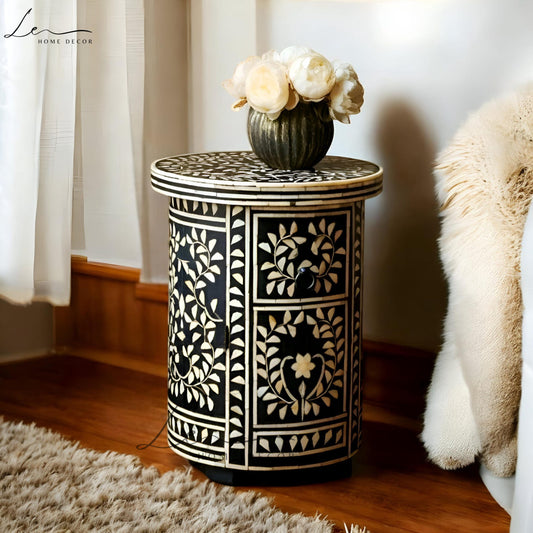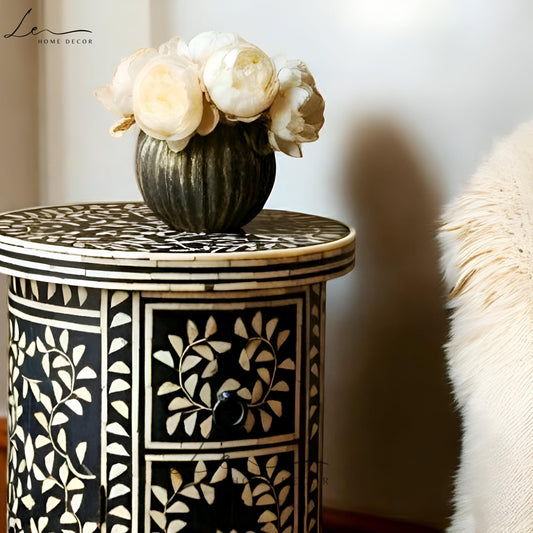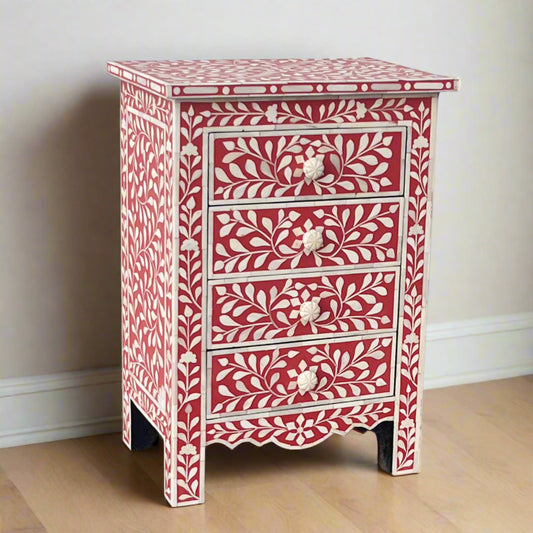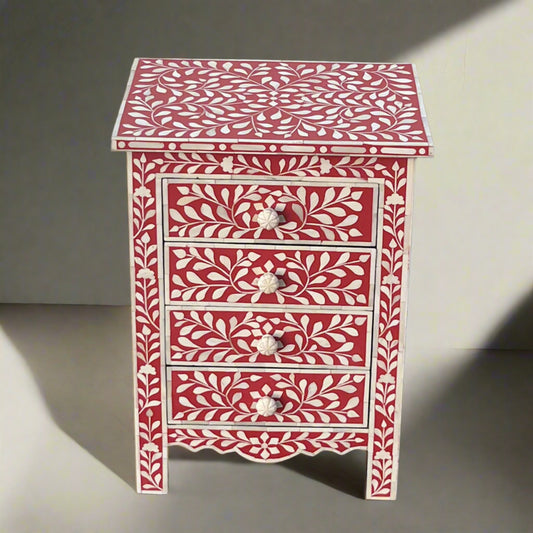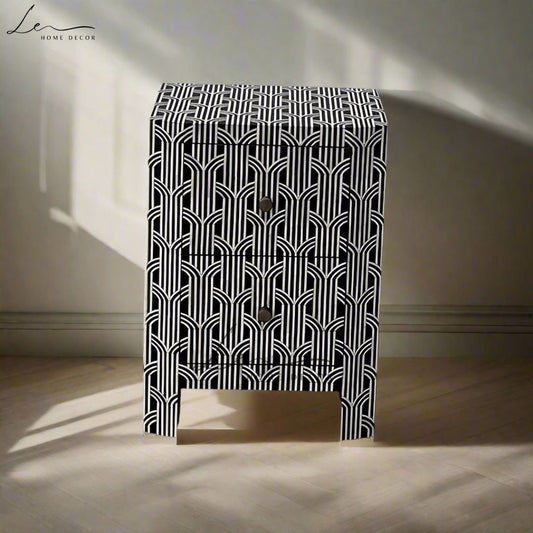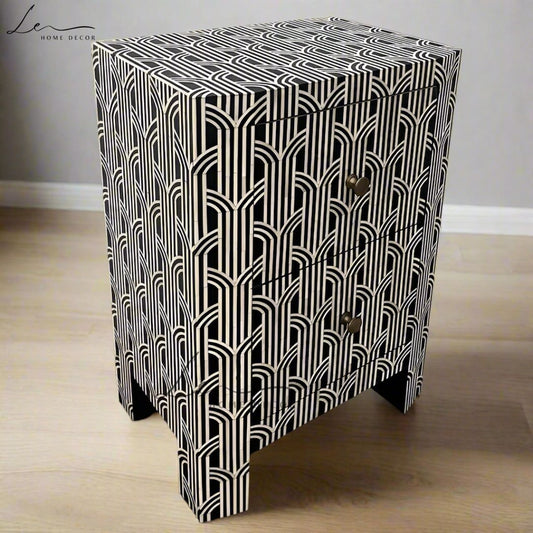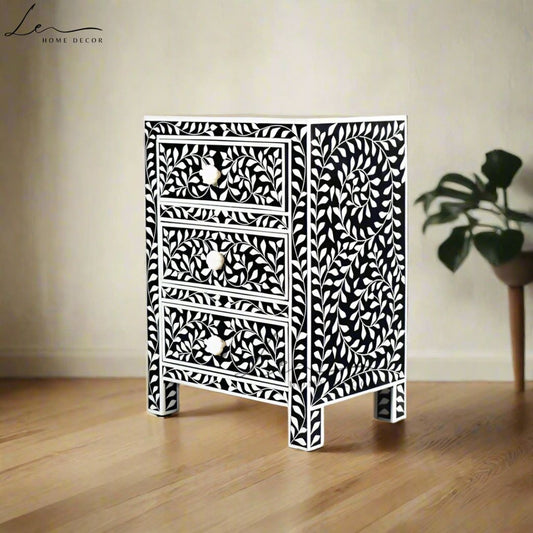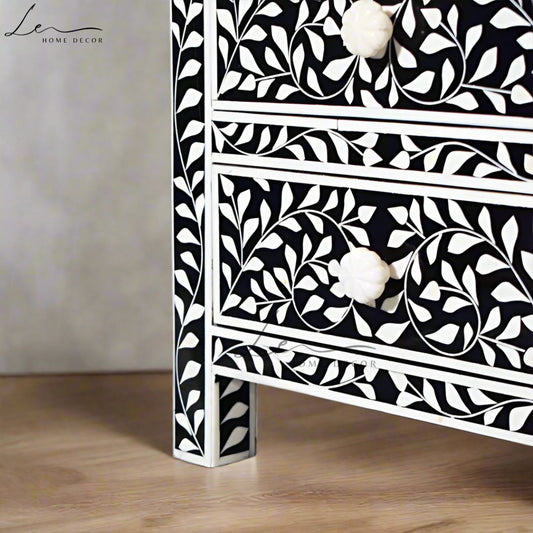A bone inlay, also known as intarsia, is a home decor trend in which fragments of bone or shell have adhered to the frame of a furniture piece. It is most commonly used on flat surfaces – such as the sides and tops of tables, or the front of a sideboard.
Each furniture piece that comes out of the artisanal process features bone fragments contrasted against a darker background – resulting in a gorgeous, one-of-a-kind pattern that works as statement decor in its own right.
How Is Bone Inlay Made?
These types of furniture pieces possess meticulous, mesmerizing patterns – which are a direct result of a generations-old tradition called bone inlaying.
Centuries ago, bone-inlaying was an artisan’s craft in India. The process involved – and still does – hours of handcraft work; on average, it takes about a month to produce a bone inlay masterpiece.
The Step-by-Step Process
The process begins by cutting and delicately shaping bone fragments. To fill the space between each fragment, the craftsman will use a malleable material to create contrast and a “background” color. In most cases, this material is resin. After the frame is filled, comes the final step of the process: sanding and waxing for a smooth finish.What Materials Are Used Besides Bone?
Types of Bone Inlay Furniture
- Bone inlay coffee table: Bone inlay coffee tables are the perfect way to display patterns of bone inlay in the center of a living room or den. Since coffee tables are the largest surface item in a room, the decorative touches will stand out all the more.
- Bone inlay dresser: These designs are often inlaid with bone on the top surface panels (not the drawers or side paneling). This is because it is easier to inlay materials on flat, horizontal surfaces that are not disrupted by drawer mechanisms, pulls, or side paneling/molding.
- Bone inlay Wall Decor & Desk: These designs aren’t what you see every day in a home office, and so are the perfect pick for styles with a little more daring attitude.
- Bone inlay side table: Opt for a bone inlay side table to accentuate an entryway or foyer; the bold pop of pattern and texture is often the piece that pulls a space together.
- Bone inlay console table: A bone inlay console table is another common furniture piece involved in production processes. Use this to accentuate a living room or behind-sofa area.

